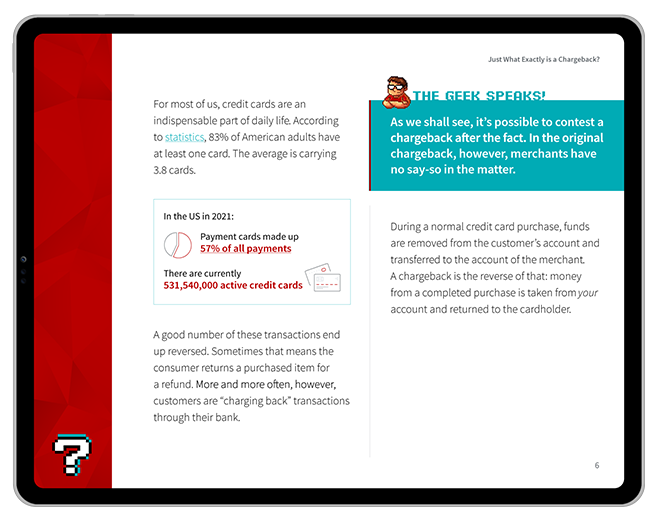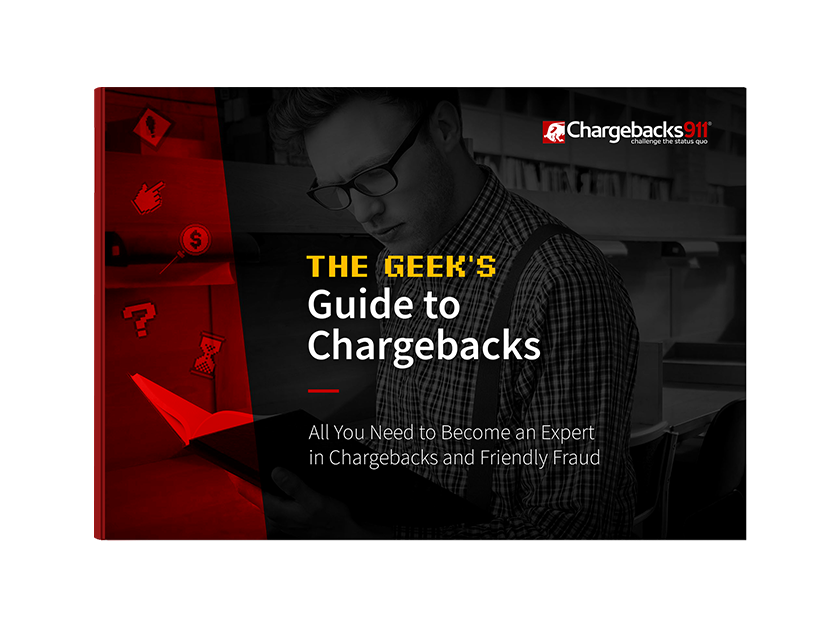How to Protect Your Business Against mCommerce Fraud Losses
Here’s a fun fact: by the time 2025 rolls around, it is projected that a staggering 70% of all online transactions will be conducted through mobile devices.
This puts an enormous emphasis on the need to think about online shopping as a “mobile-first” channel, if you’re not doing so already. Part of optimizing your business for mobile commerce is to mitigate mobile commerce (or “mCommerce”) fraud threats.
Kicking this off requires a comprehensive understanding of the most common types of mCommerce fraud that merchants like you are up against. You also need to understand how it might impact you, and what you can do to prevent it altogether.
So, let’s walk through each facet of this issue together, starting with the most obvious question.
Recommended reading
- Address Fraud: How Criminals Swap Addresses to Abuse Victims
- How do Banks Conduct Credit Card Fraud Investigations?
- What is Wardrobing? How Can Retailers Stop Refund Abuse?
- Key Credit Card Fraud Statistics to Know for 2024
- Scammers See Opportunity as March Madness Begins
- Man-in-the-Middle Attacks: 10 Tips to Prevent These Scams
What is mCommerce Fraud?
- mCommerce Fraud
mCommerce fraud refers to a subset of eCommerce fraud that is perpetrated using mobile devices.
[noun]/em • kä • mərs • frôd/mCommerce fraud, short for “mobile commerce fraud,” is a bit of a catch-all term. It can refer to any fraudulent activity or scam that occurs on mobile platforms and apps, or which simply involves the use of a mobile device by the scammer.
Essentially, it encompasses a range of scams aimed at exploiting both consumers and businesses through the convenience of mobile devices. This could involve unauthorized transactions, as well as identity theft or the production of fake mobile apps. Scammerce can also engage in phishing schemes, in which scammers manipulate users into divulging sensitive information.
How Does mCommerce Fraud Work?
Decoding the nuances of mCommerce fraud is complex. As mentioned above, mCommerce fraud covers any commerce fraud involving a mobile device. That broadness makes any neat and simple rundown of the concept impossible. Instead, it’s best that we subdivide mCommerce fraud into some common schemes and tactics.
Here are some of the various scams that fraudsters can deploy under the banner of mCommerce fraud:
What Makes mCommerce Fraud Different From Other Threats?
The popularity of shopping via mobile applications has soared. Unfortunately, not all app creators maintain robust security measures. Some might lack the comprehensive security protocols that more established online retailers implement on their sites, creating potential vulnerabilities that fraudsters are eager to exploit.
The convenience of having payment information saved on mobile commerce platforms can backfire if a user’s account is compromised. Fraudsters can make unauthorized purchases swiftly and discreetly, leaving the user and the merchant to deal with the aftermath.
Also, it’s worth noting that the way in which people shop on mobile devices differs significantly from desktop-based commerce. Quick, impulsive buying decisions are more common, and users might be shopping while multitasking, which can lead to lowered guard and increased susceptibility to fraud.
Some risk factors that are specific to the mCommerce space include:
How mCommerce Fraud Impacts Merchants
eCommerce merchants grapple with the repercussions of fraud, regardless of the sales channel they operate in. However, with mobile commerce taking up an ever-increasing slice of the eCommerce pie, the spike in mCommerce fraud is particularly concerning for sellers.
mCommerce fraud leads to:
Eroding Trust and Brand Impact
A data breach that spills customer information can erode trust. Affected customers distance themselves from the compromised merchant's platform. They might also voice their grievances on platforms like social media or through reviews, creating lasting damage to the brand's image.
Increased False Declines
Merchants may adopt an overly-cautious approach in the bid to safeguard their earnings. They reject any transaction with even a hint of suspicion. Such an approach, while protective, might inadvertently turn away genuine customers, costing long-term loyalty.
Checkout Hurdles
Striking a balance between security and user experience is tricky. While adding security layers might deter fraudsters, it can also introduce hurdles in the checkout process. Such friction can lead to potential customers abandoning their carts, translating into missed sales opportunities.

At the end of the day, mCommerce fraud isn’t the only threat for which you need to be on the alert. But, with mobile use on the rise year over year, it’s becoming a priority. That said, what can you do to protect your business?
How 2FA Can Help Stop mCommerce Fraud
Incorporating two-factor authentication (or “2FA”) is a wise strategy for merchants aiming to secure their mCommerce platforms. Organizations that take advantage of 2FA can see significant savings in terms of criminal fraud and family fraud deterrence. But, even with the benefit of 2FA technology, you can still be vulnerable to abuse.
Different countries and regions have different standards for the deployment of 2FA technologies. This can complicate matters when trying to authenticate cross-border customers, and may negatively impact the customer experience.
Synthetic fraud could be a method to easily defeat some 2FA tactics, like the one-time text code. Knowledge-based questions (requiring a passcode as a second identification factor) may also be defeated by fraudsters who manage to trick consumers into handing over personal information.
While 2FA is not a silver bullet, it considerably raises the security bar, making it substantially more difficult for fraudsters to prevail. By deploying 2FA authentication technology, merchants can foster a safer mCommerce environment, safeguarding their operations and customer base.
10 Tips to Prevent mCommerce Fraud
Stopping fraud while keeping mCommerce customers happy is a delicate process. Remember that mobile users are usually on the go and prioritize ease of use and on-demand convenience. You need a multilayered fraud prevention strategy to get the most out of your mobile selling platforms without exposing your business to risk.
We recommend including all the following practices to get you started:
#1 | Implement 2FA
As mentioned above, two-factor authentication adds an extra layer of security during transactions or account logins by requiring a second form of verification. This could be a temporary code sent via SMS or generated by an authentication app, for instance.
#2 | Use Mobile Device Verification
Ensure that the device being used for the transaction is legitimate and has not been compromised. This can be done through device fingerprinting and assessing the integrity of the device.
#3 | Encourage the Use of Mobile Wallets
Mobile wallets like Apple Pay and Google Wallet provide an additional layer of security They require 2FA verification, like biometric security and tokenized card information, making transactions more secure.
#4 | Monitor for Jailbroken or Rooted Devices
Devices that have been jailbroken or rooted are more susceptible to malware and other security vulnerabilities. Implement systems to detect transactions from such devices, and consider subjecting those purchases to further review.
#5 | Invest in Mobile-Specific Fraud Tools
Use fraud prevention solutions that are designed specifically for mobile transactions, like device fingerprinting. These tools can analyze mobile transaction data and user behavior to detect and prevent fraud.
#6 | Regularly Update Your Mobile App
Do you have a mobile app designed for your customers? Ensure your app is regularly updated with the latest security patches and features. Encourage users to update their app to the latest version (or do so automatically on their behalf).
#7 | Use Geolocation
Use the mobile device’s geolocation data to verify that the transaction is being made from a legitimate location. Transactions from unusual locations, or which don’t match the payment information provided, can be flagged for further review.
#8 | Educate Your Customers
Raise awareness among your customers about the importance of mobile security. Provide tips and best practices for secure mobile shopping. This protects your business, and also builds goodwill with customers, who will appreciate your concern for their safety.
#9 | Implement Strong Data Encryption
Ensure that all data transmitted through your mobile app is securely encrypted. This includes payment information, personal details, and any other sensitive data. Update systems regularly to head-off the threat posed by new vulnerabilities.
#10 | Monitor User Behavior for Anomalies
Analyze user behavior within your mobile app to detect unusual patterns that could indicate fraudulent activity. For example, rapid and repeated taps might suggest a bot attack, as might a high transaction velocity.
Get the Help You Need to Stop mCommerce Fraud Chargebacks
Each step outlined above is an important part of your response to mCommerce fraud. However, we can’t overlook the importance of seeking out help from experts when needed.
Chargebacks911® is the industry’s leading force in chargeback management. We deploy Intelligent Source Detection™ technology to identify disputes by their source — merchant error, criminal fraud, or friendly fraud — then implement the necessary solutions to eliminate chargeback issuances.
Don’t let fears about mCommerce fraud rob you of lucrative sales and other opportunities for growth. Contact Chargebacks911 today and make fraud and disputes a thing of the past.
FAQs
What is an example of mCommerce?
mCommerce, or mobile commerce, involves completing transactions using mobile devices like smartphones or tablets. An example would be using a smartphone to purchase a book through an eCommerce app, where the entire browsing, selection, and payment process is conducted on the device.
What is the difference between eCommerce and mCommerce?
mCommerce (mobile commerce) refers to online transactions conducted via mobile devices like smartphones and tablets. It is a subset of eCommerce.
On the other hand, eCommerce (electronic commerce) encompasses a broader range of online shopping activities, including transactions made on desktop computers, laptops, as well as mobile devices.
What is mCommerce fraud?
mCommerce fraud involves fraudulent transactions via mobile devices like smartphones or tablets. It exploits vulnerabilities unique to mobile platforms and shopping apps to deceive users or steal their information.
Can two-factor authentication prevent mCommerce fraud?
While two-factor authentication (2FA) adds an extra layer of security and can significantly reduce the risk of mCommerce fraud, it cannot completely prevent it. Fraudsters are continually developing new methods to bypass security measures, including 2FA, making it essential for both merchants and users to remain vigilant and adopt a comprehensive approach to security.













